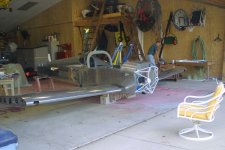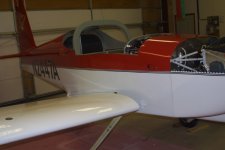Another thing to remember is the fuselage needs to be level, both fore and aft and side to side, when setting the wing sweep and incidence. Marks on your floor, tape measures, plumb bobs, and levels are used to ensure accuracy. This is more difficult to do with a plane that has to be raised up high enough to get it off the gear and level. When building these airplanes, there are many things that get done, and redone multiple times to get it right. When you are ready to drill those locating holes for the permanent fit, you want to be sure. Aligning flight surfaces is most critical for straight and level flight.



